By Presleigh Johnson
Public History is everywhere. Whether it’s signs all over St. Augustine, reenactments, or surf culture exhibits, the Oldest City is a treasure trove of history. Being a Flagler College student is one of the best ways to learn about the St. Augustine community.
I think everyone remembers the first time they entered the Hotel Ponce de Leon’s Dining Hall. It’s hard to forget the Tiffany stained glass windows or the gold, vaulted ceiling reminiscent of a European palace.
For Flagler students like me, it’s become the setting of our favorite memories where we eat with friends and share our stories. For St. Augustine tourists, it’s the setting that lets the imagination run wild over what life was like in the Gilded Age.
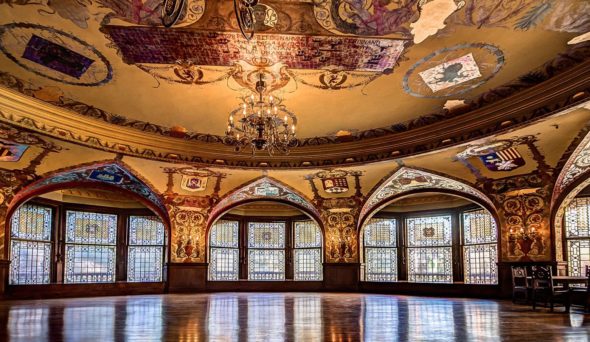
Students and tourists aren’t the only ones fascinated by the opulent world of the rich and famous. From HBO’s The Gilded Age to historical fiction novels, stories about the era seem to be everywhere. We imagine Gilded Age life, but what can we really learn about the era?
Menus from the Hotel Ponce de Leon open the opportunity to imagine what life was like in an era that seems foreign and far removed. Designed to attract the Northern upper-class, Henry Flagler’s hotel hosted members of the Rockefeller family, American presidents, dignitaries, and more. Opening with the hotel in January 1888, the Dining Hall was the location where guests gathered at meal time.
Menus left over from the hotel’s early days answer the age-old question of “What’s for dinner?” The menu from the first dinner ever served in the Dining Hall lists over 30 items, including “Turkey, Cranberry sauce,” “Chicken, sauté, a l’Espagnole,” and “Apple Pie.” These dishes elevate American favorites like turkey and apple pie but also experiment with flavors reflecting the city’s Spanish heritage. Like the hotel, the cuisine catered to an audience interested in Florida becoming an American paradise.
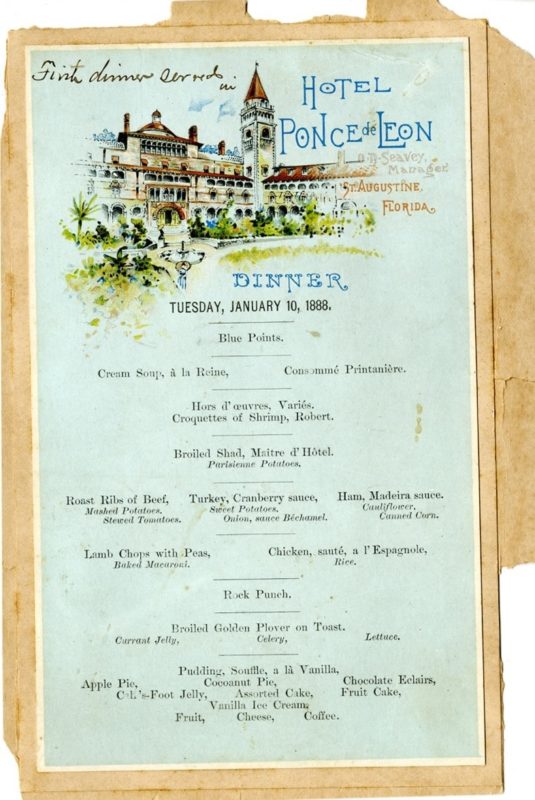
Just a few years later, a guest could be served, to name a few options: “Green Turtle, clear,” “Small Oyster Patties,” “Boiled Leg of Kentucky Mutton,”—whatever that means—”Punch en Surprise,” and “Lee’s Indian River Oranges.” Dishes ranging from green turtle to regional fruit might seem odd when paired together, but they reflect the uniquely Floridian experience Henry Flagler was trying to give his guests.
Seafood and oranges, even green turtle, were local delicacies that reinforced Florida’s reputation as a tropical paradise. Many of the hotel’s dinners were eclectic mixes of American, European, and distinctly Floridian flavors.
Sourcing such a variety of expensive food was a logistical problem, so Henry Flagler looked for local communities to become the hotel’s agricultural producers. The town of Hastings was one community designed to meet the hotel’s demand for produce, but that history is for another column.
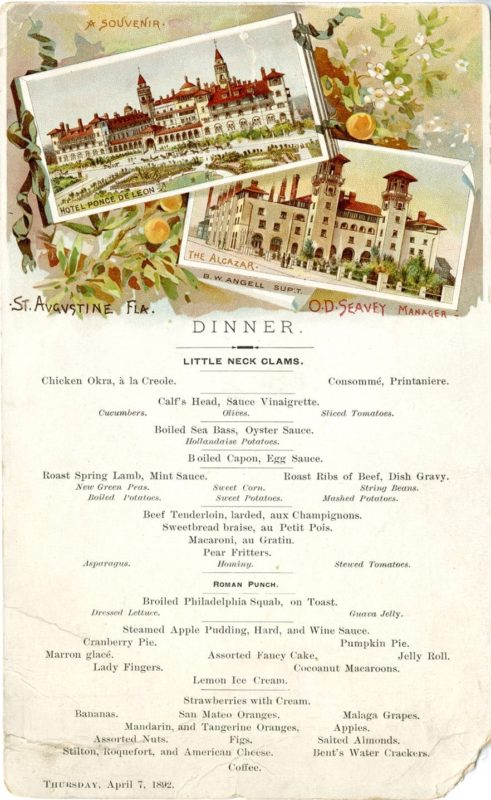
Dinner at the Hotel Ponce de Leon was not just an everyday meal, but an experience worth savoring. “The FEC Hotel Company Menu Collection provides a glimpse into a relatable part of any society,” explains Jolene DuBray, Flagler College Archives Specialist, “Our food choices are significant for sustenance and also for pleasure and celebration. The menu collection gives insight into how tastes and food trends have evolved over the decades.”
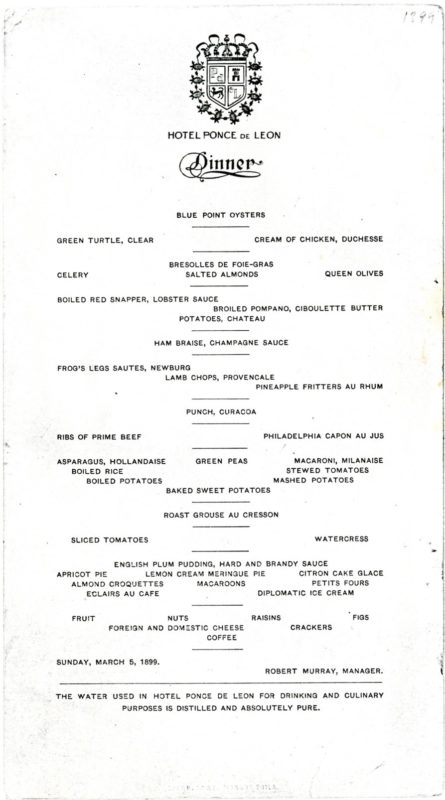
Looking back on these menus, we see a curated experience designed to impress Northern visitors. These menus are clearly a reflection of the time in which the hotel guests lived. Even though most of what we serve on our tables today is probably not “Pickled Lamb Tongue” or “Calf’s Head,” dinnertime is still a cultural expression as much as it is a daily ritual.
Even though the menus today are quite different, I have my own stories about the many nights talking with friends in the Dining Hall. Just as I imagine what meals were served in the Dining Hall, I can’t help but wonder what insights a Public History student might find about my own dinners some hundred years from now.
Click here to view more menus from the Flagler College Archives.
Click here to learn more about the Flagler College Archives and Special Collections and the history of the Hotel Ponce de Leon.

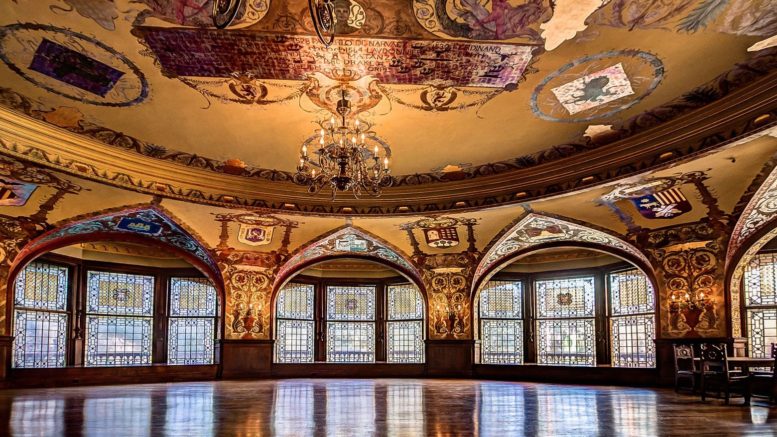


Be the first to comment on "“What’s for Dinner?”: Discovering the Hotel Ponce de Leon’s Culinary Past"